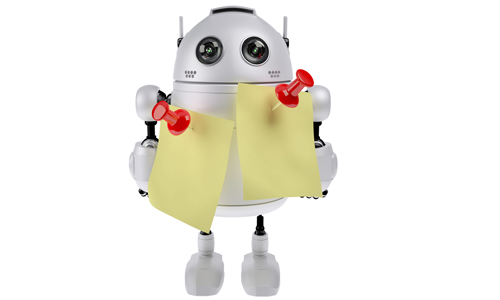With this busy and fast paced era due to the advanced technology that we all use, there is a very big change on the way we work. It is indeed true that everything is faster but then the tasks are also building in numbers. If we try to compare our current work scenario to that 50 years ago, we will see that people before had more time for the best things in life while people these days are focused on more work. Even freelancers who work at home and who handle their own time are bombarded with so many tasks to do. With this, one would tend to do multi-tasking.
But even if multi-tasking becomes a trend for some workers, single tasking will still be in the work scenario because not all tasks can be done effectively with multi-tasking and not all people are good in multi-tasking. So, you might wonder which one is better and which one could actually make you more productive. We will help you develop a better understanding about single tasking and multi-tasking.
The Truth About Multi-tasking

Many freelancers find multi-tasking necessary in order to accomplish their tasks and projects. Many also claim that they have perfected their skills in multi-tasking and they associate success to that. With multi-tasking, one feels that he is more effective and productive. Juggling tasks is a skill that jobs would require as it aims for higher productivity rates. But there is something behind multi-tasking that would make us think twice about doing it.
When one multi-task, efficiency is reduced because the brain would need around 15- 25 minutes before it can adjust its focus to another task. Multi-tasking is even called serial-tasking or chronic multi-tasking. In the article, “Don’t Multitask: Your Brain Will Thank You” in Business Time, it has given an explanation on what multi-tasking can do to our brains. Doing different tasks at one time would overload the brain and may increase likelihood of errors resulting into not so good outputs. Let us take a moment to watch this presentation about multi-tasking:
The video we have just seen can tell us that there are some tasks that cannot be perfected when done simultaneously. These tasks include those that need deep and critical thinking. It would be different to merely listen to music while running or scanning a magazine while watching television. You see, tasks differ on the amount of attention and thinking it would require. The more analysis it needs, the more attention it requires. Have any of you here experienced having headaches after forcing yourself to multi-task critical tasks? Some tasks that are light can be done together without causing harm to the brain like listening to music while working on the computer.
But apart from the downside of multi-tasking, it can also be helpful especially to those who have tons of work to do. Yet, it still depends on how you will work on your tasks. When multi-tasking, see to it that you will review your work before delivering it to the client to check on mistakes. Also, see to it that you do not multi-task too much for it might drive your mind crazy to be jumping into so many tasks at a time. Give yourself a few minutes before starting another task so you won’t pressure your brain. The most common multi-tasking these days is using the internet with so many tabs opened. This would allow you to read emails, respond to emails, do social media promotion, check blogs and many other things simultaneously. You can read on 10 Steps to Accomplish More By Working Less which is related to this topic.
What You Can Get from Single Tasking

Now let us look into single tasking. From the word itself, single tasking is about doing one thing until it is completed. After its completion, you would then move to another task. For some, this is like a waste of time but the truth is, you are actually more productive and you are more efficient with the task you are doing. You may feel incompetent and unproductive while single tasking because you were used to doing many tasks at a time. But single tasking can help you become more productive because your brain can concentrate on one task. This could help you complete the task at once.
If you view this as going slow, then so be it. There is what we call slow intelligence which includes doing things slowly like writing, reading and others. This could be the reason why you can be more creative and innovative if you are focused on one task. When you work slowly, you only do that when you are single tasking. But the word slow here is not associated with time but it is associated with being focused on the work you are doing. This means that instead of rushing which leads to more errors and inefficiency, you could keep an eye on the task, thus making sure that the output would be good. This is what we call slowly but surely. Another advantage of single tasking is that you will be less stressed because you would not need to deal with a lot of work in one time.
So, if you think that single tasking is a thing of the past, you are totally wrong. You will realize that even if you just completed one task at a time, the results are tremendous and would give you a great sense of reward. Tasks that needs more focus include design planning, budget planning, analyzing site statistics and other mental tasks.
Do Both Single Tasking and Multi-tasking

No one would stop you from doing both. You can actually do multi-tasking and single tasking for a project. You can do this by selecting which would best apply for a certain project or tasks. We have mentioned some examples of tasks that falls under each one. You can use this as a guide on what to do with your tasks. Also, you decide on how you can work on a project in order to be more effective and get outputs that would satisfy your client.
This means that you should not be limited into multi-tasking or single tasking all the time. Be able to learn how to weigh tasks well so you can determine which way you would take in working for a project. Anyway, there isn’t any law that hinders you to combine both.
How to Do Single Tasking and Multi-tasking Rightly
Now that you already know the effects of multi-tasking and single tasking, allow us to give you some guides on how can choose which work style to use for your tasks. Read on the tips below and be able to effectively and rightly use single tasking and multi-tasking.
1. Identify the tasks.

The first thing that you need to do is to identify the task. List down what these tasks are so you will know what steps you would take in order to complete a project. It is important that you have a work flow or design process so that you will be guided. Make sure also that you know how to break those tasks into smaller tasks to make it easier to achieve. List down both major and minor tasks.
2. Major and minor tasks.

Since you have identified the tasks you will do for a project and have also determined the major and minor tasks, then it would now be easier for you to know how you would treat them. Major tasks are large tasks that you need to single-task. Minor tasks are smaller tasks that can be multi-tasked. But if you have many large tasks, the best thing you can do is to break them into smaller tasks and multi-task on some of them. But if you find it hard to break large tasks into smaller tasks, you need to single-task on it.
3. Physical tasks and mental tasks.

Physical tasks are mindless activities because you can do it without much thinking. Mental tasks are those that need much thinking and analysis. So, categorize your tasks if it is a mental task or physical task. Doing this is one way to make multi-tasking effective. A good example of this is listening to music while working. Music can even be a good source of inspiration and could motivate you to work.
4. Time required for tasks.

You also need to look into how much time a certain task needs. Tasks that needs more time in order to accomplish requires more concentration. These should be single-tasked so that you can you can finish working on it at the right time and you could also look into every detail of it without distraction. Meanwhile, for tasks that require lesser time, you can multi-task them.
5. Focus and minimize distraction.

Whatever kind of task you did, it is important that you are able to focus on them. Also, work on an area that is free from distractions and interruptions because these will waste a huge part of your time. Be able to focus on the important tasks only. You can read on how to prioritize essential tasks effectively where you will be given more tips on how to be a better freelance worker.
What is Your Choice?
What would you do now? If you are a multi-tasker, you can try single tasking. If you are a single-tasker, you can also try multi-tasking. Then try to compare which would make you more productive and which works better for you. There is no wrong way and right way because it differs in every individual but be sure not to multi-task too much because it won’t give good effects on you. If you decide to try both, do not expect that it would be easy because it would surely be challenging to adjust. But we are certain that there would be a great change on your work performance once you learn to use multi-tasking and single tasking rightly.
So, what kind of freelance worker are you? Which one is more effective for you – single tasking or multi-tasking? You can share to us your opinion on this and even your personal experiences while working on your freelance projects.







For now I’m doing a single task to be sure that I can do my job very well and finish it on time but someday I will try to do multi-tasking.
I do both depending on the task. But I am also more of a multi-tasker because I value time a lot. Yet, there are also tasks which needs focus and should be single tasked. I guess, one thing I am good at if we speak of multi-tasking is taking care of my daughter while working.lol
I agree with you that one would feel proud when multi-tasking but that also depends on the output. If the output is not good, then multi-tasking failed. Like what you said, it also depends on the person and the situation. 🙂
I always sungle task when I do something that needs my full concentration, like reading or designing an illustration.